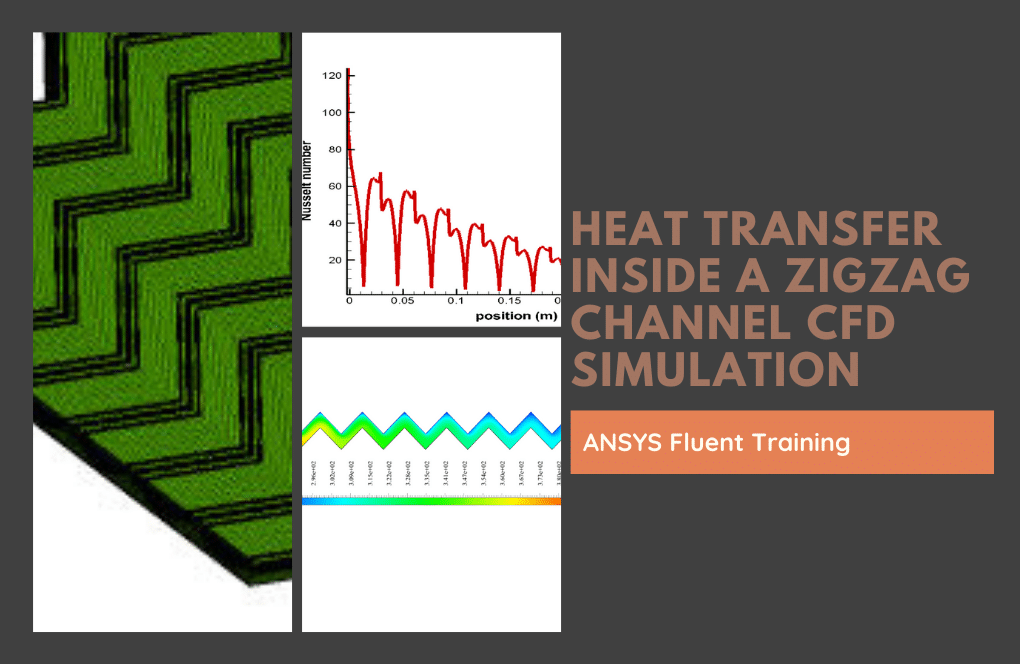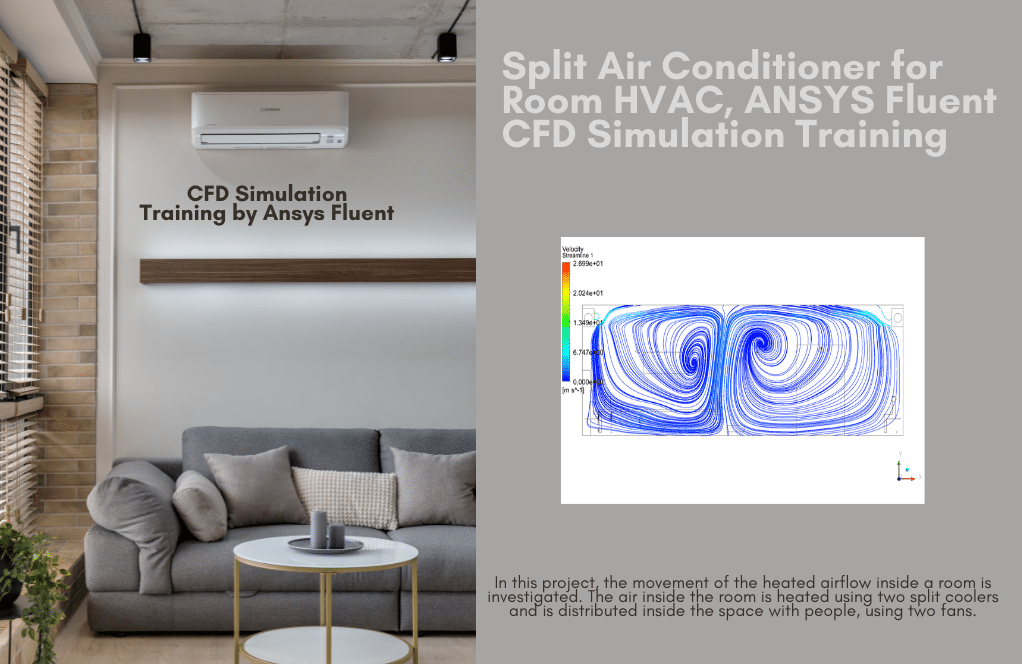Heat Transfer Inside a Zigzag Channel CFD Simulation, ANSYS Fluent Training
Free
The present study simulates the heat transfer of water flows through a zigzag channel.
Click on Add To Cart and obtain the Geometry file, Mesh file, and a Comprehensive ANSYS Fluent Training Video.
To Order Your Project or benefit from a CFD consultation, contact our experts via email (info@mr-cfd.com), online support tab, or WhatsApp at +44 7443 197273.
There are some Free Products to check our service quality.
If you want the training video in another language instead of English, ask it via info@mr-cfd.com after you buy the product.
Description
Project Description
The present study simulates the heat transfer of water flow through a zigzag channel by ANSYS Fluent software. The number of times the channel goes up and down horizontally is equal to ten, and the angle of the channel in each of these ten steps is assumed to be 15 degrees for the first model and 45 degrees for the second model. Since the flow Reynolds number has a low value of 107, the flow is defined as laminar.
Water flows into the channel at a velocity of 0.033409888 m.s-1 and a temperature of 393.15 K and exits the end of the channel at a pressure equal to the atmospheric pressure. The lower wall of the zigzag channel is insulated and the upper wall has a constant temperature of 276.65 K.
Zigzag Channel Geometry & Mesh
The present 2-D model is drawn using Spaceclaim software. The present model is related to a channel that has a zigzag structure in its horizontal direction, the number of these zigzag modes is ten. In one model, the channel angle is 15 degrees relative to the horizontal ridge, and in the other model, 45 degrees. The figure below shows a graphic geometry for both modeling modes, a 15-degree angle, and a 45-degree angle.
The meshing has been done using ANSYS Meshing software. The mesh type is structured and the element number is 48,000. The following figure shows a view of the mesh.
Heat Transfer CFD Simulation
To simulate the present model, several assumptions are considered, which are:
- The solver is pressure-based.
- The simulation is steady.
- The gravity effect is ignored.
The following is a summary of the steps for defining a problem and its solution:
| Models | (heat transfer inside a zigzag channel) | |
| Viscous model | Laminar | |
| Energy | on | |
| Boundary conditions | (heat transfer inside a zigzag channel) | |
| Inlet | Velocity inlet | |
| velocity magnitude | 0.033409888 m.s-1 | |
| temperature | 393.15 K | |
| Outlet | Pressure outlet | |
| gauge pressure | 0 pascal | |
| bottom wall | (heat transfer inside a zigzag channel) | Wall |
| wall motion | stationary wall | |
| heat flux | 0 W.m-2 | |
| upper wall | Wall | |
| wall motion | stationary wall | |
| temperature | 276.65 K | |
| Solution Methods | (heat transfer inside a zigzag channel) | |
| Pressure-velocity coupling | SIMPLE | |
| Spatial discretization | pressure | second-order |
| momentum | second-order upwind | |
| energy | second-order upwind | |
| Initialization | (heat transfer inside a zigzag channel) | |
| Initialization method | Standard | |
| x-velocity | 0.03227147 m.s-1 | |
| y-velocity | 0.008647115 m.s-1 | |
| temperature | 393.15 K |
Heat Transfer in a Zigzag Channel Results
After the solution process is completed, two-dimensional velocity, pressure, and temperature contours are obtained for two modes with angles of 15 and 45 degrees. Also, the Nusselt number on the upper wall of the channel along the length for the two modes with angles of 15 and 45 degrees.













Wilma Rau –
Can this simulation be used to optimize the design of a zigzag channel heat exchanger?
MR CFD Support –
Absolutely! The results from this simulation can provide valuable insights into the optimal design of zigzag channel heat exchangers to maximize heat transfer.
Nikita –
Hi, I’d be grateful if you could explain more about the results. What is the effect of increasing the channel angle on the heat transfer rate?
Thanks in advance.
Mr. Jaylan Bartell –
The use of CFD in this simulation is truly innovative!